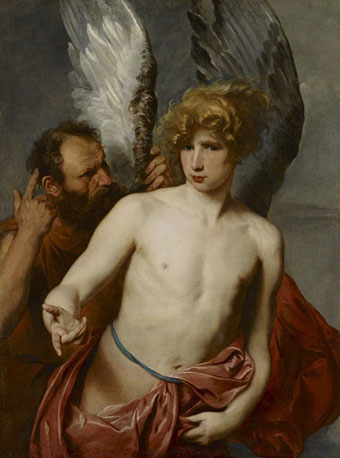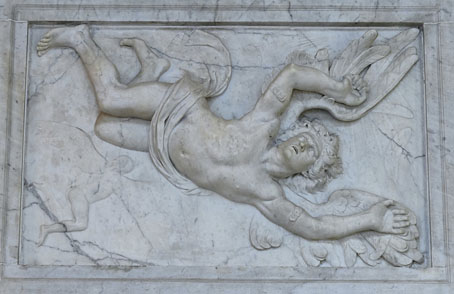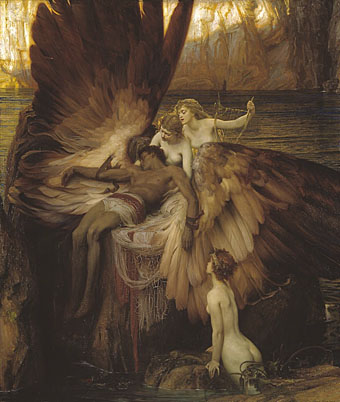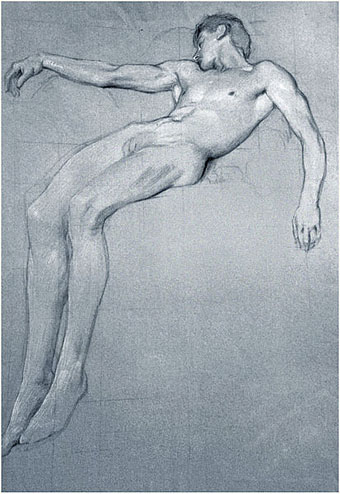Daedalus and Icarus (1615–1625) by Anthony van Dyck.
The story of the doomed youth as seen via the few Icarus works at the Google Art Project. Brueghel’s famous painting is absent, unfortunately, so I won’t quote the equally famous lines by Auden either. Van Dyck gives us a golden-haired twink that Auden might approve of although I seem to recall the poet preferred rougher trade. No indication as to how those wings are supposed to function when they don’t seem to be attached to anything. The father points ominously skyward while the boy already knows where he’s headed.
Icarus (1655) by Artus Quellinus.
Artus Quellinus was a Flemish sculptor whose work is a deliberate harking back to Classical antecedents.
The Lament for Icarus (1898) by Herbert Draper.
Herbert Draper has been dismissed for years as a late-Victorian kitsch-monger, far too academic to be worthy of consideration. Since I often feel an affection for anything that upsets art critics I rather like his brand of fin-de-siècle soft porn. Many artists of the period at least varied their output often enough to avoid accusations of unseemly interests. Not so Draper, whose oeuvre runs the gamut of wet mythological females: naiads, sirens, kelpies, mermaids, etc. Even with dead Icarus as a subject he has to throw in a naiad or three. Van Dyck’s twink has transmuted here into a muscular hunk; he’d need to be strong to wield those colossal wings. Interesting to see from the study below that the figure was developed considerably from the original model. The study is also a better piece of draughtsmanship than the painting where the right arm seems wrong somehow, and the legs appear to be melting down the rock on which he’s beached. Barry Windsor Smith produced a variation on the theme in the 1980s that may have been inspired by the Draper, something he called Self-Portrait with Wings.
Study for Icarus (1898) by Herbert Draper.
Previously on { feuilleton }
• The end of Orpheus





Everything goes better with naiads?
I know the first Icarus–a sophomore in high school here…
Like Michael Newberry’s Icarus, this one seems to combine Greco-Roman and Christian iconography.
Hi Marly. Yes, Icarus looks especially angelic while his father resembles one of Leonardo’s saints pointing to Heaven but with the face of a Michelangelo figure. You get that mix in a lot of post-Renaissance painting, it’s a kind of have-your-cake-and-eat-it approach whereby the myths of the pagan world can be depicted whilst also being given a Christian gloss.
I’d not seen the Michael Newberry painting before, that’s an interesting take on the theme. It’s a considerable challenge to do anything new with these myths when they’ve been subject to centuries of different representations.
Rather like your fascination with the ‘recurrent pose’ in the style of Flandrin, Icarus has always spoken to me, John – so l value greatly seeing these new images (for me at least). Apart the dual joys and daydreams around lads and flight, for homo-neurotic types – intense, intellectual, ‘decadent’ – the metaphor of flying too close to the sun followed by ‘the fall’ is irresistably allegorical.